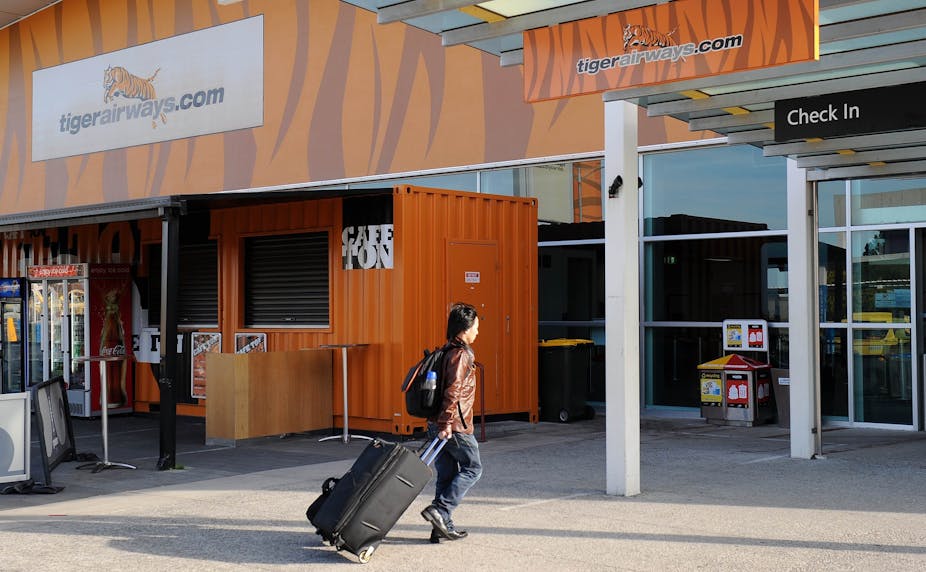The grounding of Tiger Airways over the weekend underlines the difficulties of the airline business.
The global airline industry has consistently failed to generate an adequate return on capital, even in the best years of the past decade.
Rising fuel prices now often account for half of the operating costs of an airline, and a greater proportion for a low cost carrier like Tiger.
The fuel price increase has choked off last year’s recovery in operating margins worldwide.
Australia is a tough place to run a low cost carrier operation.
Much of the market is concentrated in a strip along the eastern seaboard. At the centre of that coastal strip sits Sydney’s Kingsford-Smith airport with constrained capacity and curfews.
While the “Ryanair model” in Europe has thrived using secondary airports that would underwrite low cost airline operations in return for the economic contribution that flights brought to local communities, no secondary airport exists close to Sydney, and there little chance of one in the near or mid term. To play in the country’s largest markets, Tiger had no option but to serve the more expensive airports.
Addressing the 15th Air Transport Research Society Annual Conference at the University of New South Wales last week, Air Asia X Chief Executive Asran Osman-Rani underlined the polarity of the airline business.
Airlines must either offer high quality services that appeal to those prepared to pay a premium, or they must be able to achieve best cost operations with high seating density and high aircraft utilisation.
The linear Australian market and Sydney’s curfews limit Tiger’s aircraft utilisation to that of their domestic competitors. The airline’s seat count is matched by Jetstar on the same aircraft type, and all airlines distribute travel online. Little operating cost advantage is available to allow Tiger to assume an aggressive lowest cost strategic position.
In aggregate, Australian conditions leave Tiger facing the same fuel costs, the same airport costs, similar distribution costs, and the same aircraft ownership costs as its higher service rivals.
Its low cost competitor Jetstar enjoys passenger feed and organisational support from its parent Qantas, while Virgin Australia increasingly targets the higher yielding corporate market and receives connecting passengers from its alliance partners.
Tiger is arguably in the worst possible position. Its chosen market strategy is at the low end, and with a limited network and poorer product perception, it is competing almost solely on price.
This is a dangerous place to be in an environment where Tiger has a very limited cost advantage.
Its competitors can selectively match Tiger’s pricing on flights with weak demand, but capture better returns on more commercially attractive services.
Flying is an extremely safe way to travel, but it is utterly unforgiving of errors. Part of the safety of the system is the constant monitoring of engineering and flight crew performance.
In Australia the Civil Aviation Safety Authority (CASA) has the job of ensuring that airlines meet the required standards, and through its ongoing audits to identify patterns of deficiencies. Grounding Tiger carries a strong message that CASA has lost confidence in the ability of Tiger’s management to meet these standards.
Ultimately, recovering CASA’s confidence may be the easier task.
If Tiger returns to Australian skies, convincing the travelling public that the airline represents a safe and reliable option may be a much greater task. Tiger’s revenue management unit would need to lift fares to a price point that allows an adequate return on capital in the relatively small and difficult Australian market.
The endangered Asian cat may well find that its habitat has become too marginal in Australia, and move its injured brand and its aircraft to markets that offer some better prospect of survival.

